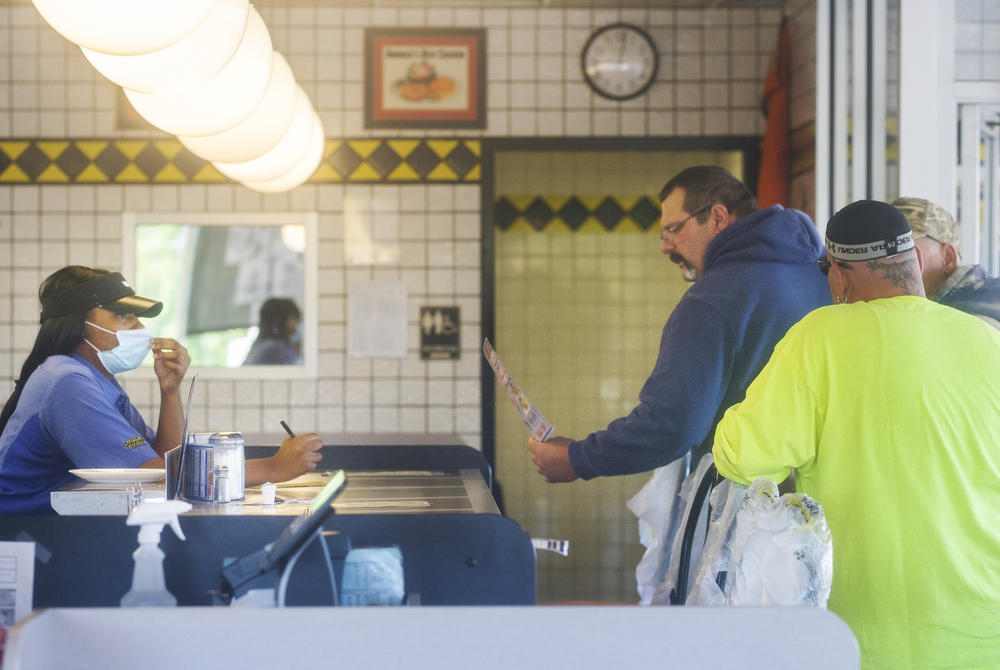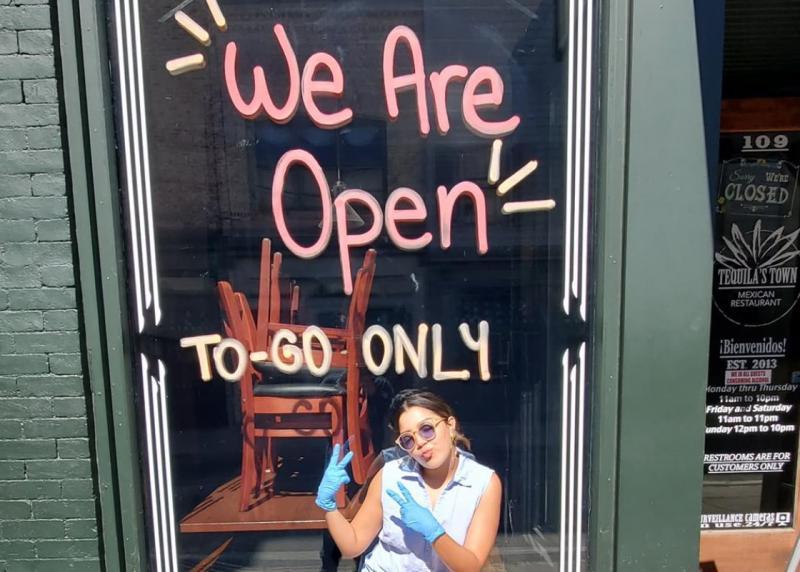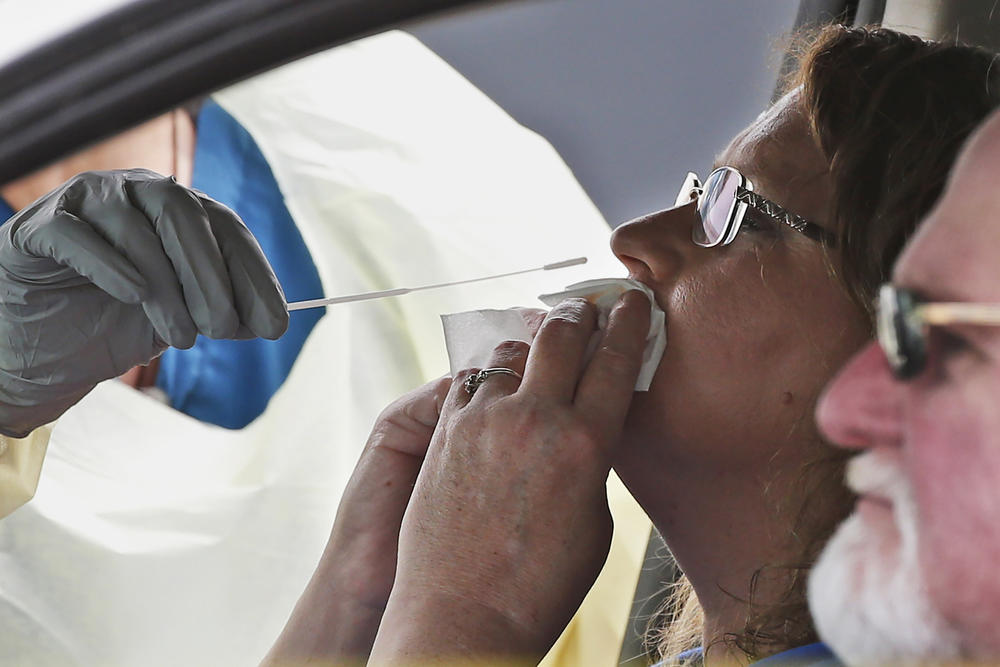Section Branding
Header Content
Georgia Coronavirus Updates: Kemp Holds Day Of Prayer; Restaurants Reopen Dining Rooms
Primary Content
Gov. Brian Kemp is holding a “Day of Prayer” service at the Capitol Monday as some restaurants begin to allow patrons back into their dining rooms.
Kemp will also hold a press conference at 4:30 p.m. to discuss the state’s next steps in the coronavirus pandemic, including the status of Georgia’s stay-home order set to expire April 30.
You can watch live at gpb.org/coronavirus.
As of noon Monday, the state has reported 942 deaths and 23,773 total COVID-19 cases from more than 127,000 tests performed.
Here is the latest Georgia coronavirus news for Monday, April 27.
Day of prayer
Kemp and other top state officials will be joined by different faith leaders to hold a prayer service at 10 a.m. in the Capitol rotunda.
"Our unprecedented battle with COVID-19 has proven the resolve of the people of Georgia to fight hard, come together, and do what is necessary to stop the spread of the virus," Kemp said in a statement. "While we cannot all be together right now, we can join with one another in prayer for our frontline healthcare workers, first responders, law enforcement, business owners, local leaders, and fellow Georgians as we continue the important work of fighting COVID-19 and safely reopening our state.”
The service will not be open to the public, as large gatherings are still prohibited by the state and advised against by health officials.
Restaurants can reopen dining, but few plan to
Per the governor’s executive order last week, restaurants can now open their dining rooms to customers – with about 39 caveats.
More specifically, there is a long list of health and safety precautions that must be met before a food establishment can resume in-person service.
Some are standard fare for all businesses and not necessarily applicable to the hospitality industry, like teleworking or staggering workstations.
Other requirements include face masks for all employees, increased hand-washing and using pre-rolled silverware, plus limiting space to 10 diners per 500 sqaure feet.
If a restaurant does choose to reopen, there will be no salad bars, buffets or self-service condiment stations.
And the penultimate guideline? “Where practicable, take-out and curbside pick-up services should be prioritized over dine-in services.”
In Savannah and elsewhere across the state, many restaurants are opting to follow that last guideline and keep their dining rooms closed.
"They are taking a financial hit, and they're still saying 'we wanna make sure that we are as certain as we possibly can be that we have the right parameters in place to keep not only our staff but also the Savannah community safe,’" Jackie Schott, Executive Director of the Savannah Downtown Business Association, said.
Norcross-based Waffle House will reopen more than 400 restaurants today, and the chain will continue to follow extra precautions put into place about six weeks ago, before the restaurants were temporarily closed.
"We have people coming into the restaurant already practicing social distancing and limiting the capacity when they come in to place their takeout orders," spokeswoman Njeri Boss said. "The only thing that's going to be really different is that perhaps a few of them might choose to sit down and eat before they leave. So we don't really see this as a grand reopening."
Relative quiet for the other “reopened” businesses
On Friday, several businesses that were shuttered for most of the month were allowed to return to “minimum basic operations,” including barbershops, nail salons and gyms.
Kemp was subject of much derision and indignation in the national attention span for much of the week, especially after President Trump backtracked on his support and publicly questioned the governor’s decision.
While there were some reports of people visiting salons and working out, most of those businesses stayed closed to customers as well.
The governor’s confusing messaging was interpreted by many as a broader return to normal, despite the text of his order (and content of some speeches) indicating the last few days are part of a very limited easing of restrictions.
One more time: what the order does
Big picture, the governor’s order does not give much incentive for restaurants to reintroduce in-person dining or hair salons to start taking customers, but also doesn’t ensure compliance if they do.
The stay-at-home edict still runs through April 30, and orders people to not leave their house unless it’s getting food, groceries or medical supplies, going to work in a critical infrastructure role or engaging in minimum basic operations for the business.
Getting a haircut or going to the gym doesn’t fall under those categories! Which is confusing to say the least, because most business owners and members of the public aren’t reading every word of the official text, or even the FAQ that was posted without a press release.
The latest order also prohibits local officials from doing any more or any less than what the state calls for until May 13, when the public health emergency expires.
Georgia’s testing
In the last week, Georgia has tested nearly 40,000 people for the coronavirus as both public and private capacity has ramped up after weeks of what Kemp called “unacceptable” levels.
The Georgia Department of Public Health released a list of all active specimen collection sites for COVID-19 testing in Georgia. Click HERE for a list of 48 locations.
A new mobile testing setup will travel between Hephzibah, Milledgeville and Tifton on a rotating basis.
The state also has two drive-thru rapid testing sites at Georgia Tech and in Alpharetta.
New York's daily COVID-19 deaths below 400 for first time In April
Elsewhere in the U.S., New York’s death toll and hospitalization numbers have continued to decline.
Cuomo described the latest numbers as "only not terrible news compared to where we were." He referred to Saturday's death toll from the disease as "horrific."
"There is no relative context to death. Death is death. 367 people passed. 367 families," Cuomo said in his briefing.
Cuomo largely attributed the decline to the efforts of New Yorkers adhering to social distancing, saying his role was to provide "facts" to New Yorkers who were willing to act responsibly.
"Government really can't act unless the people fully support the action," Cuomo told reporters. "What we have done here, government couldn't do. It was a function of what people did."
With the number of new daily infections on the decline in New York, Cuomo also detailed a rough plan to reopen the state's economy. He described a multiphase approach with certain sectors opening sooner than others.
In determining how this plan would roll out, Cuomo cited a series of factors, including federal guidance suggesting states document a decline of cases for 14 days before reopening.




